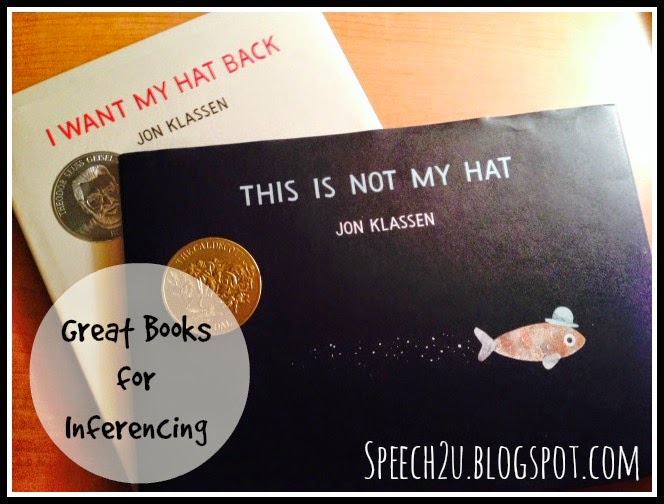I’ve always loved reading. As a child, I used to get grounded from the library. (Probably not the most logical parenting choice, but it was the 80s.) In junior high, I remember going up to my friend’s cabin for the week. We both packed one suitcase full of clothes and the other suitcase was full of books. I’m not talking high quality literature. I’m thinking it was a lot of Sweet Valley High and Fear Street books. We each read our suitcase full of books and then switched and read the other person’s books. I’m not even sure that we went outside.
I don’t have as much time for reading as I used to-and I tend to geek out on Speech Pathology books more than I should. But I still love to pick up children’s books. I was really excited when I found the book, I want my Hat Back by Jon Klassen last fall. Recently, I found another book, “This is Not My Hat” by Klassen. My son, who rarely wants to read a book twice has been a little obsessed with these books too.
Each of these books features a “surprise ending” and characters that do not act as you might expect. They both offer opportunities to practice inferencing as the ending is not clearly spelled out. I want my Hat Back is great for working on some Theory of Mind tasks.
Each book his written in short clearly sentences which makes it great for working on early sentence structures and an easy book to read within a single session. I Want My Hat book has lots of examples of question forms followed by polite acknowledgements. This is Not My Hat uses several “Even if” statements that could be used to work on more complex sentence structures.
I don’t want to give a lot away because I think both of these books are really fun to read and experience on their own.
I enjoyed I Want My Hat back so much that I ended up making a book companion for it. I actually made the whole packet almost twice because I had just finished all of my directions and bonus activities and my computer timed out. *Sigh* I know my husband wants to help-but you know what’s not particularly helpful? Asking if I saved it. And then talking about how you save things all the time. Says the person who should have SAVED her document several times during the four hours she was working on it.
I ended up with a 50 page product which is minimal color especially for end of the year budgets. (Does anyone have an end of the year budget?)
Have you read either of these books? How do you use them in therapy? Let me know by commenting below! I love to hear other people’s ideas. If you like this post-or if you are always looking for good therapy books like I am, please consider sharing this post with others via twitter or Pinterest.





